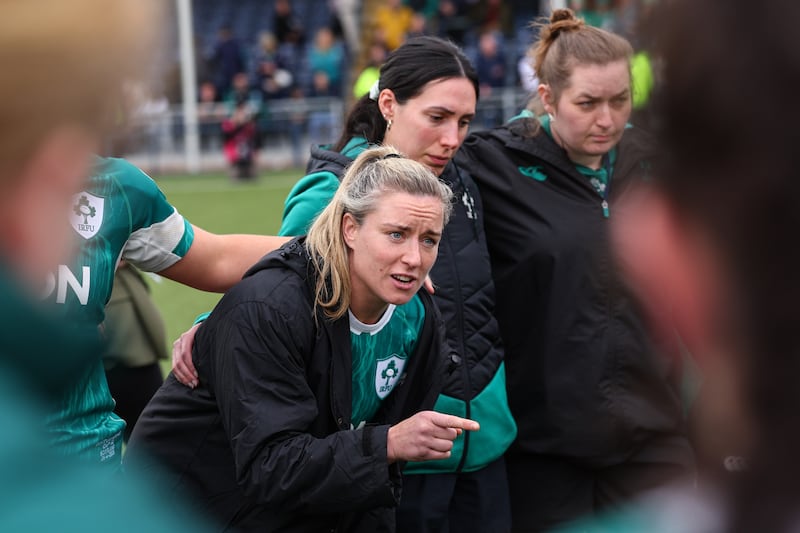D’Olier Street in Dublin is regularly busy with city life, jammed with pedestrians, traffic and people getting on with their lives, but tucked away on the street is the Blood Donation Clinic. Despite its unassuming appearance, its presence is significant as what happens inside is literally life-changing.
In the last few years there have been transformative changes regarding eligible blood donors – with people with haemochromatosis, and men who have sex with men, after a lengthy legal battle, now eligible.
This, according to Dr Ellen McSweeney, means the Irish Blood Transfusion Services are “much more on the ball now”, and the group meet “at least twice every month” to discuss further progress.
They also keep an eye on other countries to see what they're doing. However, what works for some countries may not suit Ireland. For example, getting paid to donate "would never work here", Dr McSweeney says. "What if someone didn't tell you that they'd snorted cocaine, for the sake of making quick money? It would compromise the safety of the blood given. At least, if it's altruistic, there's no reason for people to withhold information."
The IBTS has been creative with how they increase their footfall into the clinics
Despite the new candidates capable of giving blood, stocks tend to fall low in the late summer and early autumn months. "People travel,'' says Sarah O'Callaghan, a clinical nurse manager in the D'Olier St clinic. "Travel is always a big one because they do West Nile virus and a lot of places in Europe and we do testing for West Nile Virus in the summer months between May and November."
The IBTS has been creative with how they increase their footfall into the clinics. For those not based in Dublin, there is the blood van, which travels around the country setting up dates for donors. “They set up in either a hotel or GAA club, normally for evening sessions”, O’Callaghan explains. “Unfortunately, there’s no appointments or anything like that. So it just depends on how many people turn up so they can be quite busy as well as, it can be a long wait.”
Thankfully, the IBTS are in the process of enabling those in regional areas to make appointments to donate, rather than having to wait around. D’Olier Street also organises work donations, where they provide a taxi to and from Dublin-based offices to the clinic.There can be issues, however, as potential work donors may turn up, having recently had a cold or a piercing, leading to “the odd time where you get only three eligible”.
O’Callaghan explains that employees come in, “groups of up to eight at a time”.
Their innovation pays off. Noel Hiney, an aviation researcher in DCU, started donating after his workplace at the time made a call for donors and has been donating ever since, for "about the last 15 years". After that Hiney continued to make appointments, noting that the IBTS "take the work out of it" with its efficiency. "It's very structured and it's actually not at all like a hospital environment.The staff are always very engaging, they're quite conversational and any questions that you have about the blood, or anything at all about the process they'll tell you straight away."
Low iron levels, known as anaemia, is frequently cited as a reason for turning away potential donors.
Another adaption by the IBTS in the last year is the eligibility of those with high levels of iron, a condition called haemochromatosis, to donate, provided that they have completed iron depletion therapy, have had at least one therapeutic venesection without complication, and are in the maintenance phase. Given this change, the IBTS hopes to have approximately 12,000 more donors annually. Conversely, low iron levels, known as anaemia, is frequently cited as a reason for turning away potential donors.
This rang true for Aoibhinn Dwyer, a Trinity College graduate, who temporarily stopped donating earlier this year due to low iron levels, something she consigns to "stress from exams". In order to donate again, she went to her GP, and then back to donation clinic with proof of increased iron levels. She guesses she was back donating blood within "six months, with the help of iron supplements".
Despite Dwyer's experience of blood donations being personal given her dad has "had a few blood transfusions" and her parents interest despite not themselves being allowed to donate due to the blanket ban on those who lived in England in the late 1980s, it was word of mouth that got her involved, something that she found surprising given that so many colleges are "a stone's throw away from the clinic".
Years ago, donors could expect a pint of Guinness to await them after donating, due to a myth that a pint of plain had significant levels of iron. Things are a little different these days: immediately after a donation, donors can help themselves to an array of snacks in the canteen, and in the days following donors receive two texts, the first from the clinic, thanking them for their attendance, and then days after another text, again thanking the donor for the donation but also telling them where the blood has gone.
As Dwyer says, “you’ve half forgotten about it, but it’s usually a nice little moment in your day to know that someone got your blood.”
This text struck Hiney particularly, after he got a text from one of the maternity hospitals. There are unfortunate circumstances where “babies need a lot of blood and because of the volume donated they can get it all from the same person.”
On another occasion, Hiney was told his blood was used in the Mater Hospital, something he thought was personally significant “because we’ve all had family in the Mater, you know someone who has cancer or who gets blood transfusions and things like that. So it’s nice to see a kind of connection between what you’re donating at how it’s used.”















